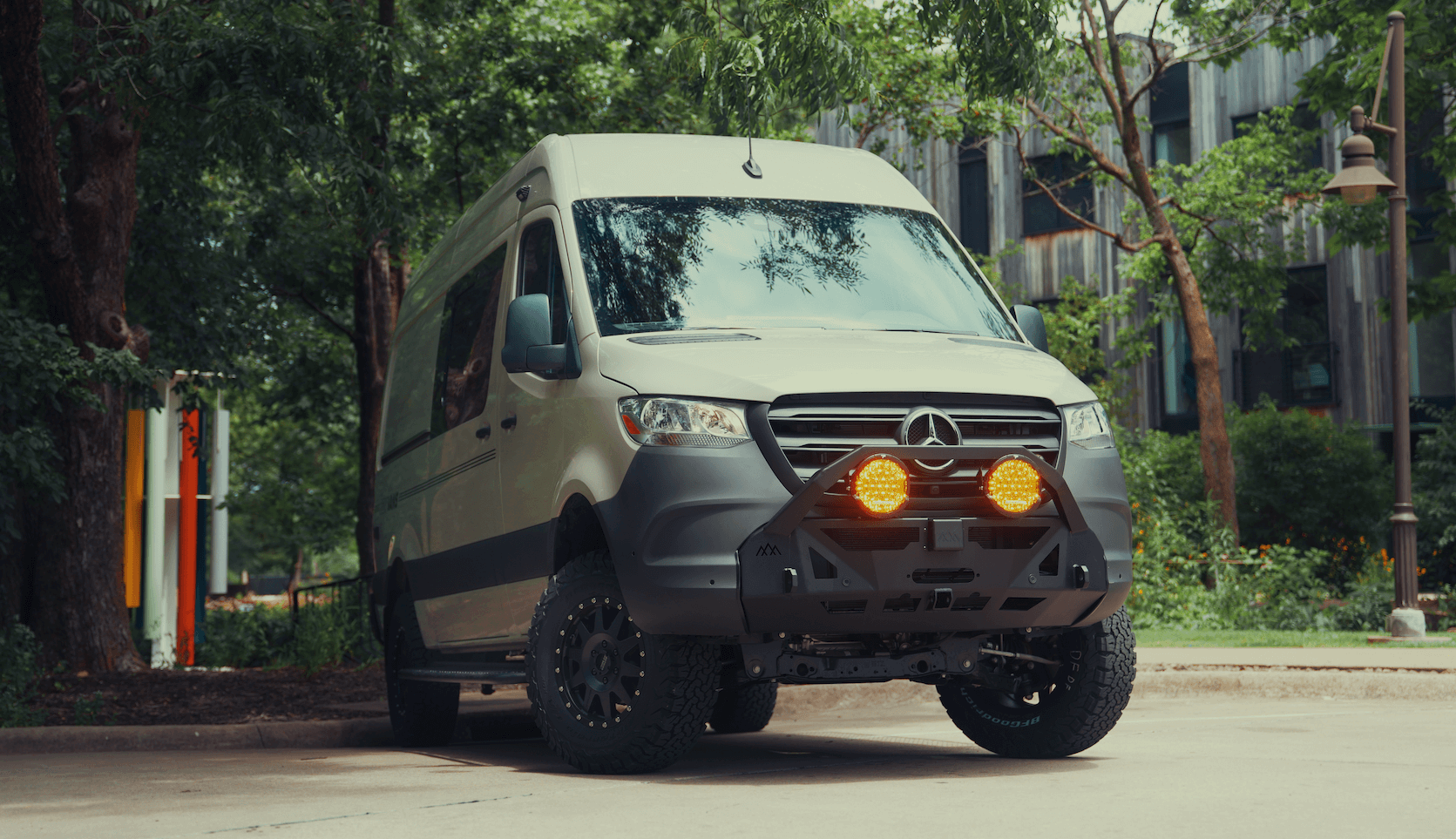Recreational Vans

A hydrogen fuel cell camper relies on a proton exchange membrane stack that combines hydrogen with oxygen from ambient air to create electricity, heat, and water. The reaction is electrochemical rather than combustion, so it runs quietly and with very low vibration. In practical terms, the stack feeds a high voltage bus or a DC DC converter that charges a house battery bank and supplies stable power to inverters and appliances. The byproducts are warm water vapor and modest heat that can be reclaimed for cabin or water preheating. Most mobile systems target steady continuous output, allowing the battery bank to handle short bursts for induction cooking or air conditioning while the fuel cell maintains charge.
A typical layout includes the fuel cell stack, balance of plant hardware for air and cooling, a hydrogen tank or tanks, regulators, and power electronics for battery charging and system control. Hydrogen is commonly stored in composite cylinders at high pressure with industry standard fittings and certified valves. Mobile installations prioritize secure mounting, ventilation, and leak detection, and they route exhaust outside the living space. Because fuel cells prefer consistent loads, an integrated lithium battery remains central, acting as the buffer between variable cabin demand and steady stack output.
The main draw is runtime and quick turnaround. With enough hydrogen on board, a camper can power refrigeration, lighting, computers, fans, and charge cycles for long stretches without noise or fumes. Refueling, when available, takes minutes compared with hours for battery charging. Cold weather performance remains strong since electrochemical reactions maintain output where some battery chemistries sag. Emissions at the point of use are only water, which keeps the campsite experience clean and quiet. For travelers who work on the road, steady power without a generator can be a game changer.
The gaps are real. Public hydrogen stations are concentrated in select regions, and most trailheads or rural corridors do not have access today. Safety requirements add complexity, including certified tanks, periodic inspections, sensors, and careful routing to meet standards. Weight, volume, and cost must be planned with precision, and thermal management is necessary for the stack and electronics. Many owners adopt a hybrid strategy that pairs a fuel cell with solar and alternator charging to reduce dependence on any single source. That mix improves resilience on long routes and at remote camps.
If you are exploring a hydrogen fuel cell camper, think architecture before hardware. Map expected daily energy use, peak loads, climate, and storage constraints, then size the battery bank to handle surges and overnight cycles. Place tanks low and near the vehicle centerline, allow service access, and protect lines and regulators. Design the electrical backbone with clean routing, labeled service points, and room for future modules. Keep ventilation and condensate management in the plan, and reserve space for heat exchangers if you want to reclaim thermal energy. Even if you start without hydrogen, building a future ready electrical bay can save time and cost later.
The most practical path today is a hybrid setup that blends solar, alternator charging, shore power, and optionally a fuel cell. Solar covers daytime base loads, alternator charging tops up while driving, and the battery bank rides through peaks. A fuel cell can then serve as the quiet, steady charger that extends autonomy when weather or schedule does not cooperate. With the right control system, the camper stays simple to operate while the power mix works in the background. Choose components with open communication protocols and serviceable parts to keep upgrades and maintenance straightforward.
Where OZK Customs fits in We design electrical systems that prioritize safety, service access, and long term flexibility. Our team builds enclosures, mounts, and wiring looms that keep high energy equipment secure and well ventilated. If your end goal is a hydrogen fuel cell camper, we can engineer the surrounding architecture, from battery selection and inverter sizing to ventilation and condensate routing, so the system is ready when the time is right. Explore our recreational vans, see how we approach custom van builds, or review financing friendly mainstream vans platforms if you are early in the journey.
OZK Customs handles complete custom builds and partial upfits, including electrical system design, fabrication, and installation. Our Fayetteville shop offers a thoughtful handoff at Adventure Point, where you can learn your system before you roll out. Share your goals and route plans, and we will translate them into a clear blueprint with timelines and budget ranges that make sense.
Tell us how you travel and what you power. We will design a quiet, capable electrical system with future ready pathways for advanced tech like fuel cells. Submit the form to start your build conversation today.
Ready to design a camper van that is future ready, quiet, and capable off grid? Talk with OZK Customs about custom electrical architecture, energy storage, and upfit paths. Our Fayetteville team can plan a build that works hard today and leaves room for tomorrow. Submit the form to start your blueprint.
ADDRESS:
6159 E Huntsville Rd, Fayetteville, AR 72701
PHONE:
(479) 326-9200
EMAIL:
info@ozkvans.com